NCERT Solutions for Class 10 History Chapter 1 - The Rise of Nationalism in Europe
Q1. Write a note on:
(a) Giuseppe Mazzini
(b) Count camillo di cavour
(c) The Greek war of independence
(d) Frankfurt Parliament
(e) The role of women in nationalist struggles
Ans:
(a) Giuseppe Mazzini (1805-1872)
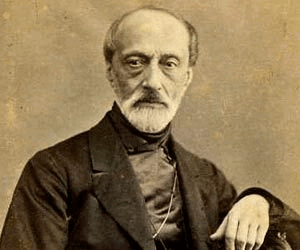
- Giuseppe Mazzini was an Italian politician and revolutionary born in Genoa in 1805.
- As a young man of 24, he was sent into exile in 1831 for attempting a revolution in Liguria. He subsequently founded two more underground societies - Young Italy in Marseilles and Young Europe in Berne.
- Mazzini believed that God has intended nations that were meant to be natural units of humanity.
- Even though he didn't reach his goals, he sparked a strong sense of love for his country and is seen as an important person in bringing Italy together. He was responsible for the growth of patriotism for a country that existed as yet only in the imagination.
(b) Count Camillo di Cavour
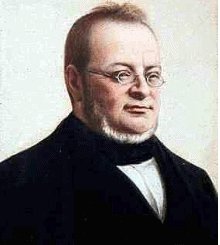 Count Camillo di Cavour
Count Camillo di Cavour
- He was the chief minister of Sardinia-Piedmont state and led the movement to unify regions of Italy.
- He was neither a revolutionary nor a democrat.
- Like many other wealthy and educated members of the Italian elite, he spoke French better than Italian.
- He formed a diplomatic alliance with France, which helped Sardinia-Piedmont defeat the Austrian forces in 1859. This consequently helped to free the northern part of Italy from the Austrian Habsburgs.
(c) The Greek War of Independence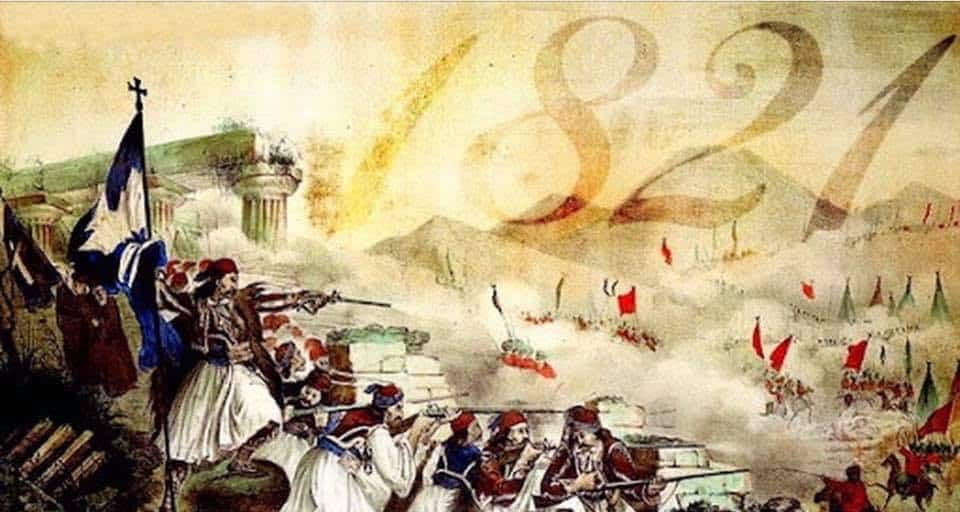 Greek war of Independence
Greek war of Independence
- The Greek war of independence mobilized nationalist feelings among the educated elite across Europe.
- Greece had been part of the Ottoman Empire since the 15th Century. The growth of revolutionary nationalism in Europe sparked off a struggle for independence amongst the Greeks which began in 1821.
- The object of the struggle was to expel Turks from Europe and to establish the old Greek eastern empire. Nationalists in Greece were supported by other Greeks living in exile and many West European countries.
- Poets and artists lauded Greece as the cradle of European civilization. They mobilized public opinion to support its struggle against a Muslim empire. The English poet Lord Byron organized funds and later went to fight in the war.
- Ultimately, the Treaty of Constantinople of 1832 recognized Greece as an independent nation. Its independence was guaranteed by Russia, England and France.
(d) Frankfurt Parliament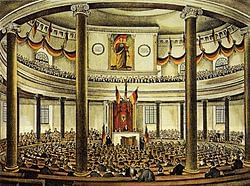 Frankfurt Parliament
Frankfurt Parliament
- All those political associations existing in the German region whose members were middle-class professionals, businessmen and prosperous artisans, formed an all-German National Assembly.
- Their first meeting was held on May 18, 1848, at the Church of St. Paul in Frankfurt, where 831 elected members gathered.
- They created a constitution for a German nation that would be led by a king under a parliament.
- However, when they offered the crown to Friedrich Wilhelm IV, the King of Prussia, he refused it, and joined other monarchs to oppose the elected assembly.
(e) The role of women in nationalist struggles
- Artistic representations of the French Revolution show men and women participating equally in the movement.
- Liberty was personified as a woman. Liberal nationalism propounded the idea of universal suffrage, leading to women’s active participation in nationalist movements in Europe.
- Women had formed their own political associations and founded newspapers. They had taken part in political meetings and demonstrations. In France, about sixty women’s clubs came up in different French cities.
- The most famous was the society of Revolutionary and Republican women. One of their main demands was to have the same political rights as men had. They were, however, denied suffrage rights during the election to the Assembly.
Q2. What steps did the French revolutionaries take to create a sense of collective identity among the French people?
Ans:
- The ideas of fatherland (la Patrie) and citizen (le Citoyen) were introduced in France.
- A new French flag, the tricolour, was chosen to replace the earlier royal standard, and the Estates-General was renamed the National Assembly.
- New hymns were composed, oaths were taken and martyrs commemorated, all in the name of the nation.
- A centralized administrative system was established and uniform laws for all citizens were formulated.
- Internal customs duties were abolished, and a uniform system of weights and measures was adopted. French from Paris became the common language, with regional dialects discouraged.
- French, as it was written and spoken in Paris, became the common language of the nation. Regional dialects were discouraged. It was decided that the French nation would liberate the peoples of Europe from despotism, and help other peoples to become nations.
Q3. Who were Marianne and Germania? What was the importance of the way in which they were portrayed?
Ans:
- In the eighteenth and nineteenth centuries, artists portrayed nations as female figures. Thus the female figure became an allegory of the nation.
- In France, Marianne, a popular Christian name – underlined the idea of a people’s nation. Her characteristics were drawn from those of liberty and the Republic — the red cap, the tricolor, the cockade.
- Statues of Marianne were placed in public squares, and her image appeared on coins and stamps to promote national unity.
- Similarly, Germania represented the German nation, depicted with a crown of oak leaves symbolizing heroism.
- The importance of the way in which they were portrayed was to remind the public of their national symbols of unity and to persuade them to identify with them.
Q4. Briefly trace the process of German unification.
Ans: The process of german unification is as follows:
- In 1848, the middle-class Germans tried to unite the different regions of the German confederation into a nation-state governed by an elected parliament. They were, however, repressed by the combined forces of the monarchy and the military, supported by the large landowners of Prussia.
- From then onwards, Prussia took on the leadership of the movement for national unification. Its chief minister Otto von Bismarck was the architect of this process with the help of the Prussian army and bureaucracy.
- Three wars over seven years – with Austria, Denmark and France – ended in Prussian victory and completed the process of unification.
- In January 1871, the Prussian king, William I, was proclaimed German Emperor in a ceremony held at Versailles.
Q5. What changes did Napoleon introduce to make the administrative system more efficient in the territories ruled by him?
Ans: There were several changes introduced by Napoleon in the administrative system, to make it more efficient, they are as follows:
- He established the Civil Code also known as the ‘Napoleonic Code’ in 1804. Due to this, privileges based on birth were abolished. The civil code also established equality before the law and secured the right to property.
- He also simplified the administrative division. There was the abolishment of the feudal system and peasants were freed from serfdom and manorial dues.
- In towns, the guild system was removed. Transport and communication systems were improved.
- Newfound freedom was thoroughly enjoyed by workers, peasants and artisans and new businessmen.
- Small-scale producers of goods began to realize that uniform laws, standardized weights and measures, and a common national currency would facilitate the movement and exchange of goods-capitals from one region to another. Businessmen appreciated the benefits of uniform laws.
Q6. Explain what is meant by the 1848 revolution of the liberals. What were the political, social and economic ideas supported by the liberals?
Ans: The 1848 revolution of the liberals:
- The 1848 revolution was led by the educated middle classes along with the poor, unemployed starving peasants and workers in Europe.
- In certain parts of Europe such as Germany, Italy, Poland, and the Austro-Hungarian Empire, men and women of the liberal middle classes came together to push their demands for the creation of nation-states based on parliamentary principles.
The political, social and economic ideas supported by the liberals were:
(i) Politically, they demanded constitutionalism with national unification. They wanted the creation of a nation-state with a written constitution and parliamentary administration.
(ii) Socially, they wanted to rid society of its class-based partialities and birthrights. Serfdom and bonded labor had to be abolished.
(iii) Economically, they wanted freedom of markets and the right to property, abolition of state-imposed restrictions on the movements of goods and capital.
Q7. Choose three examples to show the contribution of culture to the growth of nationalism in Europe.
Ans: Examples of how culture contributed to the growth of nationalism in Europe:
(i) Romanticism
- A European cultural movement that aimed at developing national unity was Romanticism. It created a sense of shared heritage and a common history.
- Emotions, intuition and mystical feelings were some of the expressions used by the Romantic artists by which they tried to emphasize on national sentiments of the people.
(ii) Folk Songs, Dances, and Poetry
- These elements spread the spirit of nationalism and patriotism. As folk culture was a major part of the lives of people, it carried a message of nationalism to a large and diverse population.
- The Polish composer Karol Kurpinski celebrated and popularized the Polish nationalist struggle through his operas and music, by turning folk dances into nationalist symbols.
(iii) Language Association
- Another important factor that played a significant role was language.
Example: During the Russian occupation, the use of Polish came to be seen as a symbol of struggle against Russian dominance. In this period, the Russian language was imposed everywhere and Polish was even taken out of schools. - After the 1831 rebel against the Russians, a large number of the polish clergy started using language as a weapon of national resistance. This was done by using the Polish language in Church gatherings and religious instructions and refused to preach Russian.
Q8. Through a focus on any two countries, explain how nations developed over the nineteenth century.
Ans: We would be taking Germany and Italy as our two examples:
(i) Germany
- Nationalist sentiments were often mobilized by conservatives for promoting state power and achieving political domination over Europe. This can be observed in the process by which Germany and Italy came to be unified as nation-states.
- Middle-class Germans tried to unite the different regions of the German Confederation, but their plans were not materialized due to the actions of large landowners called the ‘Junkers of Prussia’. Three wars over seven years with Austria, Denmark, and France ended in a Prussian victory. In January 1871, the Prussian King William I was proclaimed German emperor.
- Importance was given to modernizing the currency, banking, legal and judicial systems in Germany.
(ii) Italy
- During the 1830s, Mazzini sought to unify Italy. He had formed a secret society called ‘Young Italy’, and it had failed. Hence, the responsibility fell on Sardinia-Piedmont under its ruler King Victor Emmanuel II, to unify Italian states through war.
- Austrian forces were defeated in 1859. Apart from Sardinia-Piedmont, a large number of volunteers had joined the cause under the leadership of Giuseppe Garibaldi. In 1860, they marched to South Italy and managed to defeat Spanish rulers. In 1861, Victor Emmanuel II was proclaimed as the king of Italy.
Q9. How was the history of nationalism in Britain unlike the rest of Europe?
Ans: The history of nationalism is Britain was different as follows:
- No British nation existed prior to the 18th century. The British Isles consisted of different ethnic groups like the English, Welsh, Scot and Irish. Each group followed its own cultural and political traditions.
- On the other side, due to the growth of wealth and the importance of power in the English state, could easily extend its influence over the other states of islands. National symbols like the English language, British Flag and National Anthem were promoted to identify the nationality of the nation.
- No Revolution: While in France, nationalism was developed through revolutions, in Britain, it was the result of a long-drawn-out process.
- English Parliament: While other European countries like Germany, Italy, Netherlands, Sweden, etc., had to wage wars either to gain independence or to unify their countries, Britain accomplished this objective through Parliamentary Acts.
- The British parliament played a major role in restraining the power of the monarchy in 1688, through various bloodless revolutions. England and Scotland formed an Act of Union (1707) which laid the crux of the ‘United Kingdom of Great Britain’.
- English culture mainly dominated the British nation, whereas Scotland’s distinctive culture and political institutions were slowly and systematically suppressed.
- Thus, unlike the rest of Europe, nationalism came in Britain from the decisions of the people in power and not by people’s desire to unite or countrywide movements.
Q10. Why did nationalist tensions emerge in the Balkans?
Ans: Nationalist tensions emerge in the Balkans because:
- One of the main reasons for the tension to emerge in the Balkans was because the people aspired to nationalism. During the 19th century, a major portion of the Balkans was under the Ottoman Empire. They tried to adopt modern techniques to make changes in the internal backwardness of the state but they did not succeed.
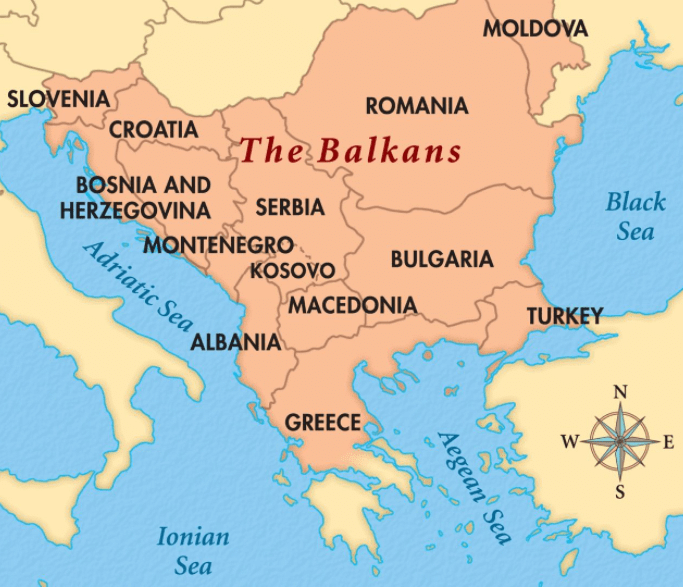
- Ethnic Variation: The Balkans was a region of geographical and ethnic variations comprising modern-day Romania, Bulgaria, Albania, Greece, Macedonia, Croatia, Bosnia-Herzegovina, Slovenia, Serbia and Montenegro. Their inhabitants were known as Slavs.
- Disintegration of the Ottoman Empire: A large part of the Balkans was under the control of the Ottoman Empire. The ideas of romantic nationalism in the Balkans together with the disintegration of the Ottoman Empire made this region very explosive.
- Subjugation: Soon, many foreign powers attempted to subjugate these newly independent states. The Balkan people tried to claim independence by using history to prove that they had once been independent. Hence, the rebellious nationalities struggled to win back their long-lost independence.
- Jealousy: There was jealousy among the Balkan states and each hoped to expand their boundaries at the expense of others. During this period, the ideology of Europe was changed, the liberal feelings were narrowed down with limited ends. Intolerance followed among the groups and they were ready to fight a war.
- Power struggle: Russia, Germany, Austria, Hungary and Britain, the European powers were interested in expanding their own imperialism. Trade, colonies, naval and military powers were some of the major factors which all the European powers were struggling for. They were all very keen on controlling the hold of the other powers and extending their own.
|
66 videos|614 docs|79 tests
|
FAQs on NCERT Solutions for Class 10 History Chapter 1 - The Rise of Nationalism in Europe
| 1. What were the main causes of the rise of nationalism in Europe during the 19th century? |  |
| 2. How did the French Revolution influence nationalist movements in Europe? |  |
| 3. What role did the unification of Germany and Italy play in the rise of nationalism? |  |
| 4. What were the impacts of nationalism on the European political landscape? |  |
| 5. How did art and culture contribute to the rise of nationalism in Europe? |  |

















